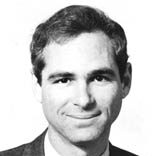Michael Massing
- 1989

Fellowship Title:
- U.S. Counterinsurgency Doctrine
Fellowship Year:
- 1989

The New Enemy in Guatemala
The signs are visible everywhere in Guatemala. Newspapers carry frequent accounts of grisly execution-style murders. Immigration authorities report a surge in the entry of Colombian nationals. Deluxe apartment buildings and office complexes rise dramatically on the outskirts of Guatemala City. A newly chartered bank in Coban, 70 miles north of the capital, is doing a brisk business despite not having formally opened its doors to the public. Drugs have come to Guatemala. The country has lately replaced Panama as Central America’s foremost trafficking center. In the mountainous region bordering Mexico, hundreds of Guatemalan peasants are cultivating opium poppies. Converted into paste, the crop is sold to Mexican traffickers for processing into heroin. Three years ago, poppies covered about 600 hectares of land; today, the figure is 2,000 hectares and rising sharply, making Guatemala the fourth or fifth largest opium producer in the world. Cocaine is an even bigger business. Every month, an estimated four tons of cocaine pass through the country on their way to the United States. The trade is controlled by the Colombian
Coca, Campesinos, and a Controversial General
Until recently, Tarapoto was a sleepy agricultural town located deep in Peru’s tropical midlands. The lush fields surrounding the town were worked by industrious small farmers cultivating rice, corn, and other staples. Nighttime entertainment consisted mostly of casual strolls around the central plaza. Then, two or three years ago, coca began to appear. Today, the crop is everywhere. Farmers, eager to cash in on the boom, are heading deeper and deeper into the countryside, carving rectangular plots into the rugged, tree-covered hills. Dollars, once scarce in Tarapoto, now circulate widely, and the town is experiencing a modest construction boom, with several hotels going up at once. Prices have risen sharply, as has the crime rate. The arrival of coca in Tarapoto is not good news for the United States. It shows that the crop is spreading into areas outside its traditional zone of cultivation in the Upper Huallaga Valley. The valley, which extends for 200 miles along the muddy Huallaga River, is the largest coca-growing region in the world. An estimated 65 percent of the
From the Cold War to the Drug War
As Moscow’s satellites spin wildly out of control, all the world’s eyes are focused on Checkpoint Charlie, Wenceslas Square, and Europe’s leap into the post-Yalta future. But what about the rest of the world? If the Cold War is ending in Europe, can the Third World be far behind? With pieces of the Berlin Wall on sale at Bloomingdale’s and the Red Army Chorus serenading the White House, the Soviet threat just doesn’t pack the punch it once did. Trouble spots remain, of course; witness the recent fighting in El Salvador. In the future, though, these “regional conflicts” will seem just that–matters of local strife–rather than theaters of superpower confrontation. On everything from nuclear proliferation to saving the Amazon, Washington and Moscow will find more in the Third World that brings them together than drives them apart. In a sign of things to come, the RAND Corporation recently held a joint U.S.-Soviet conference on combating international terrorism. So, with the Soviet threat fast receding, the U.S. can finally cut back its presence in the developing
The Stale, Small War in El Salvador
The war in El Salvador is “stuck,” and the United States is “itself stuck with the war.” Washington has failed to “revitalize” the Salvadoran government, which “remains ineffective.” U.S. economic assistance “has achieved little.” The Salvadoran military remains “remarkably immune” to U.S. efforts to reform it. Such statements might sound like the slogans of a solidarity group. In fact, they come from a report written by four lieutenant colonels in the U.S. Army. Titled “American Military Policy in Small Wars: The Case of El Salvador,” the study is sharply critical of how the Pentagon and the State Department have conducted themselves in El Salvador. In this the report is unprecedented: Never before have officers on active duty in the U.S. military issued a document so publicly critical of an ongoing action abroad Not surprisingly, the report has received a lot of attention. “There isn’t anybody who’s responsible for Central American policy who hasn’t read it,” says one State Department official formerly in El Salvador. The document is being used as a textbook at the Pentagon’s
